PDGF-BB signaling via PDGFR-β regulates the maturation of blood vessels generated upon vasculogenic differentiation of dental pulp stem cells
- PMID: 36340037
- PMCID: PMC9627550
- DOI: 10.3389/fcell.2022.977725
PDGF-BB signaling via PDGFR-β regulates the maturation of blood vessels generated upon vasculogenic differentiation of dental pulp stem cells
Abstract
A functional vascular network requires that blood vessels are invested by mural cells. We have shown that dental pulp stem cells (DPSC) can undergo vasculogenic differentiation, and that the resulting vessels anastomize with the host vasculature and become functional (blood carrying) vessels. However, the mechanisms underlying the maturation of DPSC-derived blood vessels remains unclear. Here, we performed a series of studies to understand the process of mural cell investment of blood vessels generated upon vasculogenic differentiation of dental pulp stem cells. Primary human DPSC were co-cultured with primary human umbilical artery smooth muscle cells (HUASMC) in 3D gels in presence of vasculogenic differentiation medium. We observed DPSC capillary sprout formation and SMC recruitment, alignment and remodeling that resulted in complex vascular networks. While HUASMC enhanced the number of capillary sprouts and stabilized the capillary network when co-cultured with DPSC, HUASMC by themselves were unable to form capillary sprouts. In vivo, GFP transduced human DPSC seeded in biodegradable scaffolds and transplanted into immunodeficient mice generated functional human blood vessels invested with murine smooth muscle actin (SMA)-positive, GFP-negative cells. Inhibition of PDGFR-β signaling prevented the SMC investment of DPSC-derived capillary sprouts in vitro and of DPSC-derived blood vessels in vivo. In contrast, inhibition of Tie-2 signaling did not have a significant effect on the SMC recruitment in DPSC-derived vascular structures. Collectively, these results demonstrate that PDGF-BB signaling via PDGFR-β regulates the process of maturation (mural investment) of blood vessels generated upon vasculogenic differentiation of human dental pulp stem cells.
Keywords: angiogenesis; pericytes; self-renewal; smooth muscle cells; tissue regeneration; vasculogenesis.
Copyright © 2022 Zhang, Warner, Mantesso and Nör.
Conflict of interest statement
The authors declare that the research was conducted in the absence of any commercial or financial relationships that could be construed as a potential conflict of interest.
Figures
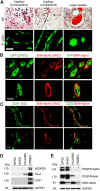
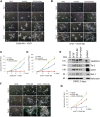
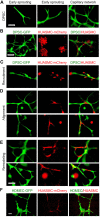

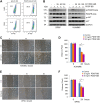
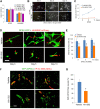
Similar articles
-
Inverse and reciprocal regulation of p53/p21 and Bmi-1 modulates vasculogenic differentiation of dental pulp stem cells.Cell Death Dis. 2021 Jun 24;12(7):644. doi: 10.1038/s41419-021-03925-z. Cell Death Dis. 2021. PMID: 34168122 Free PMC article.
-
Wnt/β-Catenin Signaling Determines the Vasculogenic Fate of Postnatal Mesenchymal Stem Cells.Stem Cells. 2016 Jun;34(6):1576-87. doi: 10.1002/stem.2334. Epub 2016 Mar 11. Stem Cells. 2016. PMID: 26866635 Free PMC article.
-
VE-Cadherin and Anastomosis of Blood Vessels Formed by Dental Stem Cells.J Dent Res. 2020 Apr;99(4):437-445. doi: 10.1177/0022034520902458. Epub 2020 Feb 6. J Dent Res. 2020. PMID: 32028818 Free PMC article.
-
The efficacy of mesenchymal stem cells to regenerate and repair dental structures.Orthod Craniofac Res. 2005 Aug;8(3):191-9. doi: 10.1111/j.1601-6343.2005.00331.x. Orthod Craniofac Res. 2005. PMID: 16022721 Review.
-
Dental Pulp Stem Cell Recruitment Signals within Injured Dental Pulp Tissue.Dent J (Basel). 2016 Mar 25;4(2):8. doi: 10.3390/dj4020008. Dent J (Basel). 2016. PMID: 29563450 Free PMC article. Review.
Cited by
-
Tissue engineering approaches for dental pulp regeneration: The development of novel bioactive materials using pharmacological epigenetic inhibitors.Bioact Mater. 2024 Jun 12;40:182-211. doi: 10.1016/j.bioactmat.2024.06.012. eCollection 2024 Oct. Bioact Mater. 2024. PMID: 38966600 Free PMC article. Review.
-
Neovascularization by DPSC-ECs in a Tube Model for Pulp Regeneration Study.J Dent Res. 2024 Jun;103(6):652-661. doi: 10.1177/00220345241236392. Epub 2024 May 8. J Dent Res. 2024. PMID: 38716736 Free PMC article.
-
Photosensitive Hydrogels Encapsulating DPSCs and AgNPs for Dental Pulp Regeneration.Int Dent J. 2024 Aug;74(4):836-846. doi: 10.1016/j.identj.2024.01.017. Epub 2024 Feb 17. Int Dent J. 2024. PMID: 38369441 Free PMC article.
-
Epigenetic therapeutics in dental pulp treatment: Hopes, challenges and concerns for the development of next-generation biomaterials.Bioact Mater. 2023 May 14;27:574-593. doi: 10.1016/j.bioactmat.2023.04.013. eCollection 2023 Sep. Bioact Mater. 2023. PMID: 37213443 Free PMC article.
-
Identifying plasma proteomic signatures from health to heart failure, across the ejection fraction spectrum.Sci Rep. 2024 Jun 27;14(1):14871. doi: 10.1038/s41598-024-65667-0. Sci Rep. 2024. PMID: 38937570 Free PMC article.
References
Grants and funding
LinkOut - more resources
Full Text Sources
Miscellaneous

